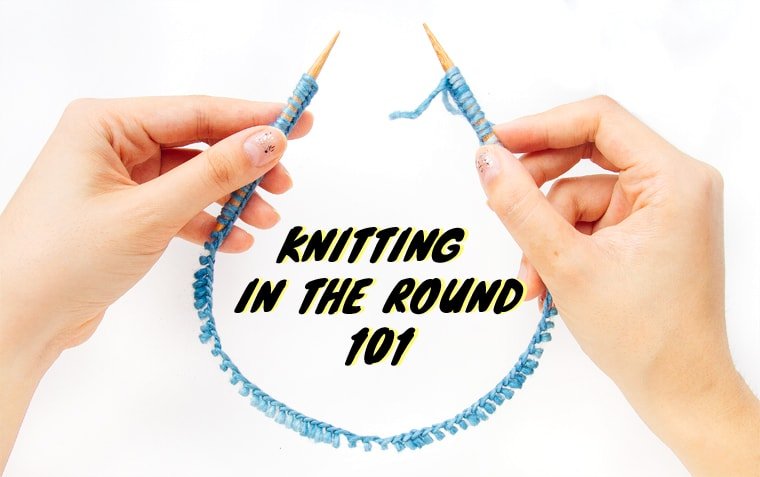
Knitting in the round is essential for going beyond the basics.
You might think that it’s scary or complicated, but that couldn’t be further from the truth! Knitting in the round is one of the easiest techniques to master.
And here’s the good news:
once you learn it, you probably won’t want to go back to regular flat needles. I know I didn’t!
In today’s post, I’ll show you how to master knitting in the round step-by-step. We’ll explore the foundations of knitting in the round, learn how to choose the right needle, and go through a detailed tutorial. You can learn by watching an in-depth video tutorial or by going through a detailed photo guide at the bottom of the page.
Let’s get started!
Table of Contents
What are Circular Needles?
First thing’s first: let’s talk needles.
Regular “flat” needles have a point on one end and a stopper on the other. They’re probably the first needles that you encountered as a new knitter.
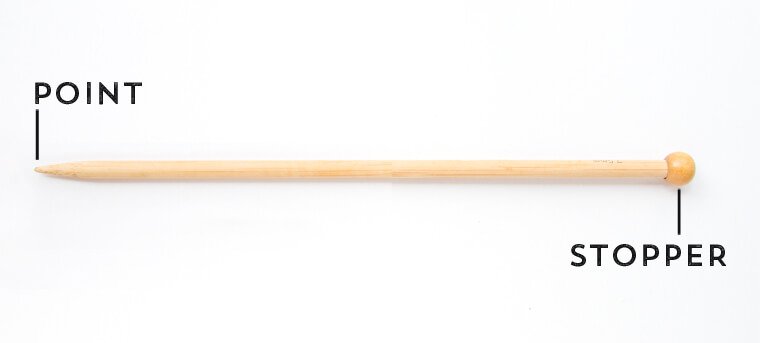
Circular needles look like two needles joined together with a flexible cable. There’s no end with a stopper. Instead, both ends are pointy.
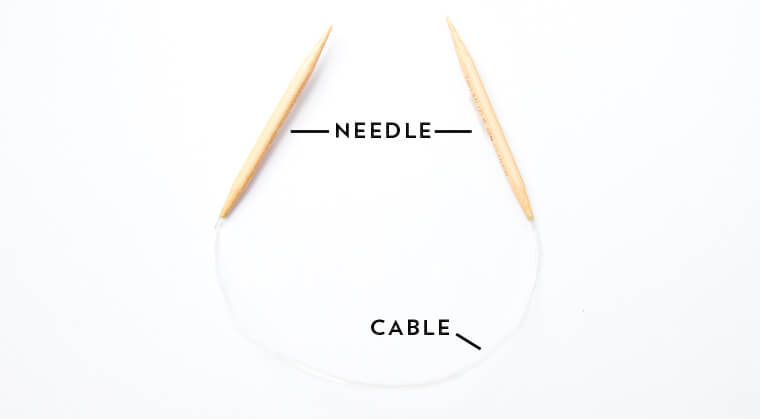
Circular Needles vs Regular Needles
Circular needles are meant to do what regular knitting needles cannot: knit a seamless round tube.
While flat needles are great at knitting two-dimensional objects like squares and rectangles (think: scarves), circular needles are designed to knit three-dimensional tube-like things.
Think about hats, sweaters, socks, and mittens. These are all things that have some element of a tube.
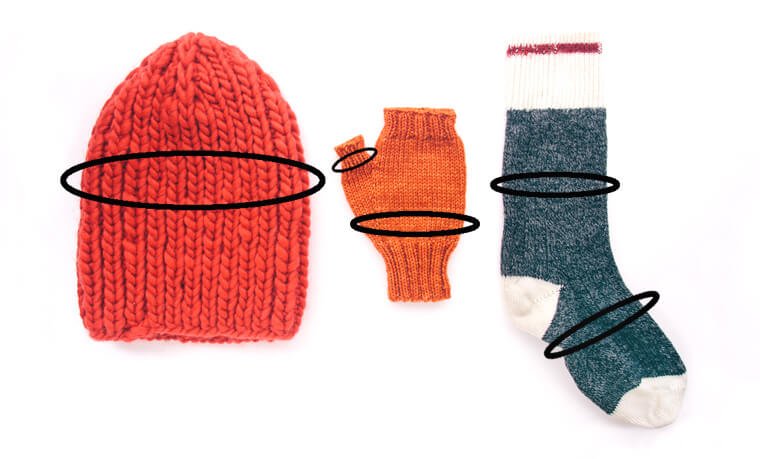
While you can knit all of the above with flat needles, you would need the extra step of sewing the knitting together to make a tube.
The genius of knitting in the round is that the tube is made right at the cast on. The resulting knitted fabric is a seamless tube that can be shaped with increases or decreases into whatever your heart desires!
Knitting in the Round is Like…
I love a good analogy. They transform complicated ideas into familiar concepts. In fact, I credit weird analogies to helping me pass eighth grade Science!
Because of analogies, I can still remember that a cell membrane is like an Oreo cookie, with two fat layers (the cookies) sandwiching a middle layer (the cream). Not sure when that fact will come in handy, but I’m glad it’s still in the old noggin!
So, here below is the best analogy I could think of for knitting in the round.
But first: let’s talk about mountains (I told you my analogies are weird!)
If you’ve ever driven up a steep mountain, you might have encountered a switchback. A switchback is a path that has a zig-zag pattern instead of a straight path. The zig-zag shape protects the trail from erosion and also makes it easier to climb.
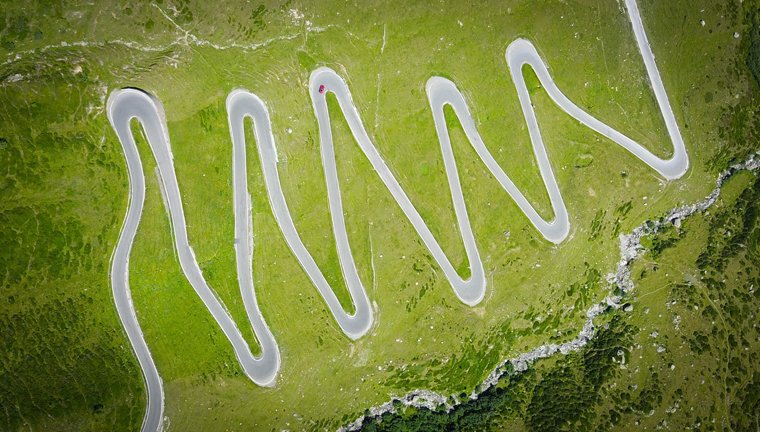
You can think of knitting on flat needles like driving up a switchback path. You knit one row, turn the needle around and knit the back of the row. You alternate between the front and the back, knitting your way “up the mountain.”
Knitting in the round, on the other hand, is like a train going up the perimeter of the mountain, spiralling up to the top. Because there’s no stopping and turning, unlike our car on the switchback path, the train moves really quickly.

And so it is with knitting. Knitting in the round is much faster than knitting flat. This is because you’re always knitting on the front of the fabric. At no point do you turn the fabric around to knit the wrong side.
Like the train heading up a mountain, your knitting progresses in one continuous spiral. There’s no turning back – just moving forwards.
What Circular Needle Should I Use?
If you’re knitting from a pattern, follow its recommended needle length and size and use it as a base to get knitting gauge.
If you don’t have a pattern as a guide, you’ve got two features to consider:
1. Length of the needle
2. Material of the needle
LENGTH: As a rule, you should choose a needle length that is shorter than the circumference of your project.
For example: if you plan on knitting a hat that’s 20 inches in circumference, choose a needle length that is shorter than 20 inches. A traditional length for hat knitting is 16 inches.
Why does the needle need to be shorter than the knitting?
Think about it this way:
If you knit a 20 inch hat on a pair of 32” circular needles, your hat will not sit comfortably on the needle. Because the hat is 12 inches smaller than the needle, it will be stretched and straining against it.
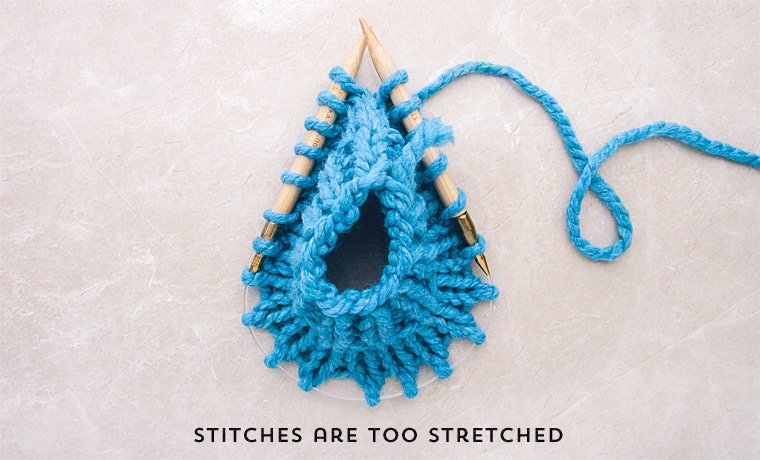
That doesn’t make for a fun knitting experience. You’ll also end up stretching out the hat before you’ve had a chance to wear it. It’s a lose-lose situation.
Thankfully, most patterns list the exact needle length required, thereby eliminating the guesswork. But the rule remains: choose a needle length that’s shorter than the knitting, and you’ll prevent future tears and frustration.
MATERIAL: Like regular needles, circular needles come in a variety of materials. Choose from bamboo, wood, steel and plastic. The choice is yours!
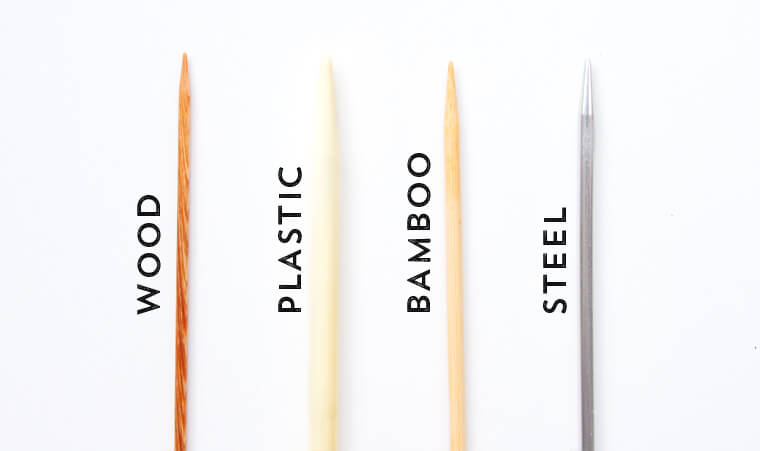
In general, I recommend bamboo or wooden needles for beginners. Both materials have good surface drag, making the yarn less slippery on the needle.
As you become more comfortable with circular knitting, you might prefer steel or aluminium needles for their smoothness and speed.
I’ve tried a lot of circular needles – some good, some bad, some downright ugly! Here are my recommendations for beginners:
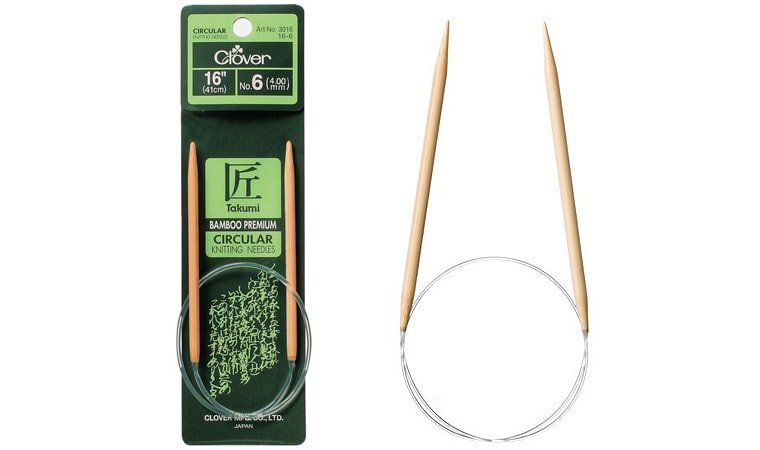
For circular bamboo needles, I’m a big fan of Clover Takumi. They are widely accessible, have smooth joins from the needle to cable, come in a wide array of lengths and sizes, and are fairly affordable. They’re also lightweight, which is typical of bamboo.
You can get Clover Takumi bamboo needles on LoveKnitting here or Amazon here
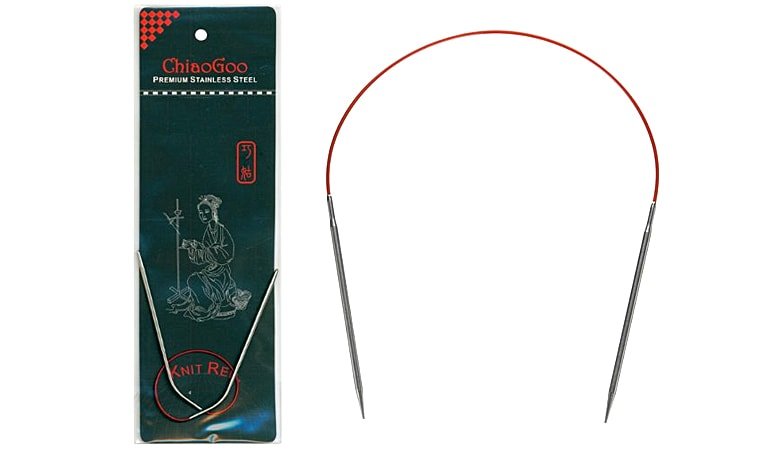
For metal needles, I like Chiao Goo and Knit Picks. Chiao Goo are stainless steel needles with an eye-catching red nylon-coated steel cable. They’re smooth, light, and come in a bunch of different lengths and sizes.
They also feature a “memory-less” cable, meaning the cable won’t hold the shape of any bends and curls. They are highly rated on Amazon, and they’ve turned me into a convert too. A solid choice.
You can get Chiao Goo circular needles on LoveKnitting here or Amazon here
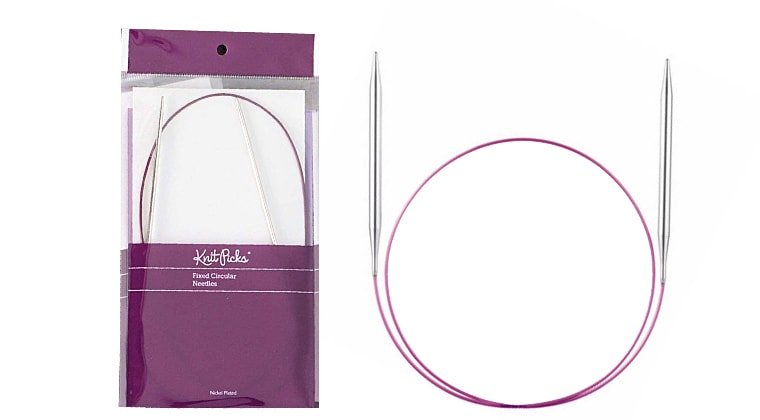
Knit Picks is also highly recommended for steel needles. Their needles are nickel-plated over a hollow brass core, making them very lightweight. The cable is marketed as being “low memory” and I’d say that’s pretty accurate.
I purchased my first pair of Knit Picks circulars way back in 2006. They lasted a good six years of constant use (and abuse) before the cable breathed its last and snapped out of the needle. RIP.
Online, you’ll find a large fanbase for Knit Picks. They got into the yarn supplies game very early on, and many knitters (myself included) have a soft spot for them.
You can get Knit Pick circular needles on KnitPicks here
Key points:
- When knitting in the round, you’re always knitting on the front of the work. You never “turn” the needle to knit on the wrong side.
- Not needing to turn the work means knitting in the round is much faster than knitting flat
- Knitting in the round produces a seamless tube-like fabric
- When choosing a needle, the length of the needle should be shorter than the circumference of the knitting. (For example: use a 16 inch circular needle to knit a 20 inch hat).
- Bamboo and wooden needles have more surface drag and “grip” while steel needles are more smooth and slippery.
Knitting in the Round Video Tutorial
Whew! That was a lot of explanation up top. Now, it’s time to pick up your circular needles, grab some yarn and learn how to knit in the round!
Check out the photo guide below for a detailed step-by-step guide to knitting in the round.
Knitting in the Round Step-by-Step Photo Guide
For those who like learning through photos or who need a quick refresher, check out the photo tutorial below. It goes through the main points of knitting in the round.
For reference, the yarn used in the photo tutorial is Malabrigo Silky Merino in color Green-Grey.
Joining Seamlessly in the Round
To make your join seamless, try this quick knitting technique. It’s incredibly easy and makes the most invisible join!
And that brings us to the end of this knitting in the round tutorial. I hope you feel more confident to pick up a pair of circular needles and begin knitting! Let me know if you have any questions below in the comments section.

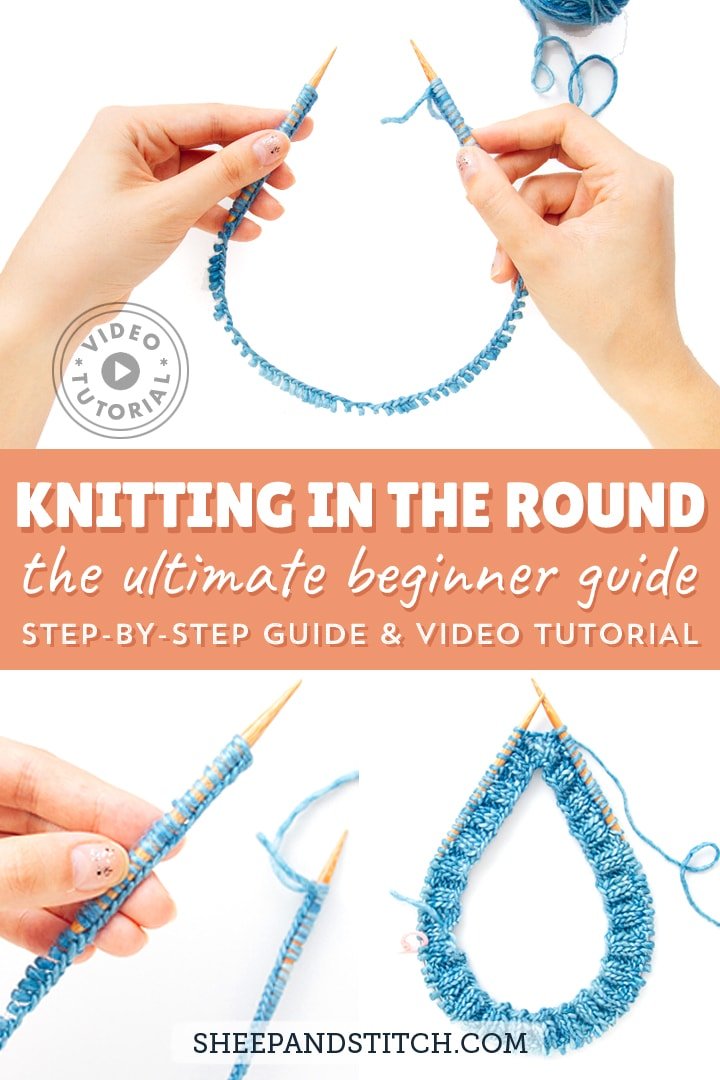
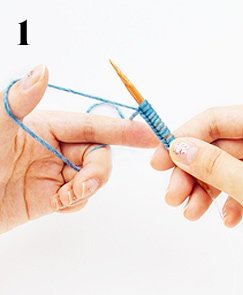

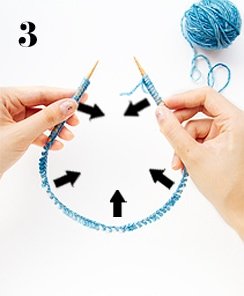
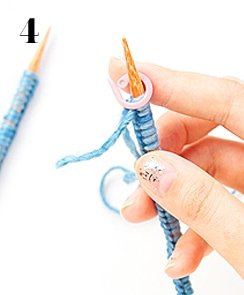
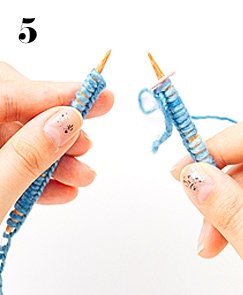
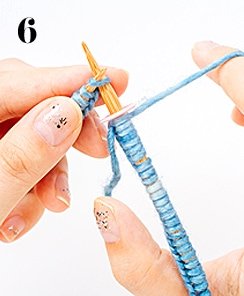
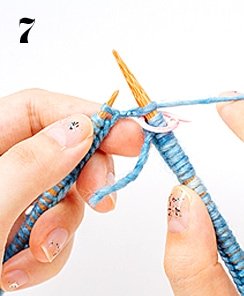
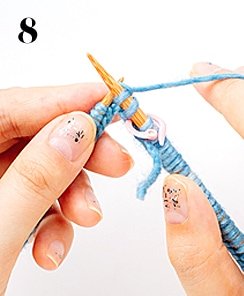
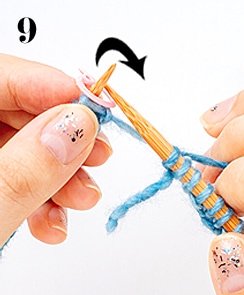
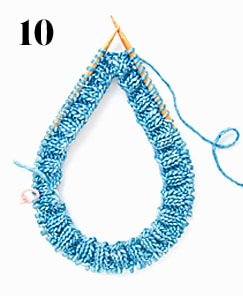
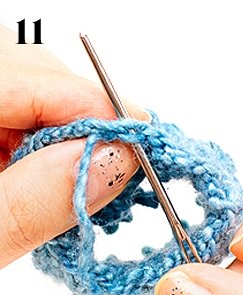
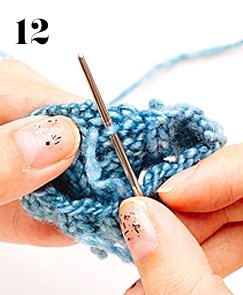
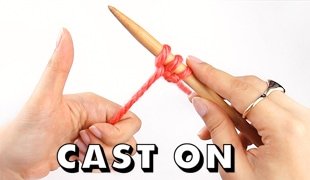
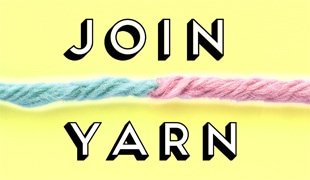
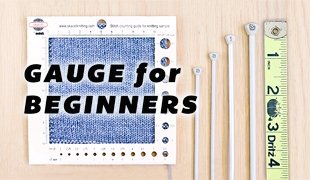


Thank you so much
I have a pattern that calls for 84 stitches on a 6 needle that is 16″ and the two sides won’t come together. what do I do? It is a circular needle.
Hi Kathie, if there’s just a small gap between the two sides, you can try to stretch out the knitting so that the sides meet. If the gap is too wide, then you may need a smaller needle! They sell mini needles these days that are 12″
Three solutions:
1. Cast on again leaving 1/4 to 1/2 inch between your stitches for a loose cast on.
2. Knit the pattern for the first row or two and then join the stitches. Use the yarn tail to sew up the small seam. I had this problem when I was casting on 72 stitches for an infant hat in #3 baby yarn.
3. Change to the long tail cast on which is more stretchy.
Hi Davina Is It possible I could knit a mitten on a 16 inch circular needle? If possible how many stitches would I cast on?
I think using a 16″ needle would be really tough. The stitches would likely need to spread too far on the needle. DPNs are my recommendation.
Good morning. I am a beginner, I knitted basic scarves 30 years ago. I recently purchased a DIY chunky throw kit, all inclusive. When I opened it, there were circular fat and tapered 5″ bamboo needles. I was able to get started but, it is sooooo difficult to knit. The yarn gets tight and I can barely get a stitch done. I’m wondering if I should purchase a regular straight pair of needles to start my knitting journey or just keep trying?! Thanks!
Hi, could you show how to knit in the round with the magic loop technique? Thank you!
Hi Davina,
I have enjoyed everyone of your videos that I have watched. Very entertaining. LOL Im struggle with knitting in the round as I thought it would be easier then joining edges and there would be no rolling of the edges. Im struggling with moving the stitches around the cable and back on to the needle unless I do it after every stitch which doesnt seem faster to me. Any suggestions.
This is great. I have circular needles and have never used them. I will give it a try. I wish you would have shown casting off.
Hi there,
It is my first time using circular kneedles and I am knitting a sweater top down (another first). However, I am finding the stitches to be quite loose and am now wondering if this is going to affect the finished garment. I usually knit at a “normal” tension on straight needles. Is there a special technique for the stitches to look the same on circular needles as on stright needles?
Thanks,
Barbara
Hi Barbara, there’s no special way to knit on circulars vs on straight needles. Just keep a tension that feels natural to you!
Wow! Thank you so much for the circular needles tutorial! Excellent teaching skills! I feel inspired, much less nervous about my project!
Hello,
Perhaps you would consider posting a video showing how to knit in the round using two pairs of circular knitting needles?
Thank you.
Did you do a backwards stitch when you got to the stitch marker? Do you have to do that each round?
Thanks so much Davina for your advice. I think it seemed loopy because of the thin cord connecting the needles. I have just finished the neck and it seems fine – just weird getting used to no tension on the circular needles. Much appreciated!
Thank-you for a concise, easy to follow procedure. I have been able to start knitting a snood. Have put off doing it for ages but have been able to bite the bullet and its looking good. Can’t wait till the next pattern comes as knitting in the round.
First I really appreciate your videos and instructional style.
I just recently started to teach myself how to knit. I have been knitting hats and socks using Magic Loop method because I feel I can not handle the DPNs. My question is: Can I start my hat, socks (projects) using in-the-round then when I would typically switch to DPNs switch instead to longer cables and complete in the magic loop fashion that I am comfortable with?
I wonder if I should buy a pair of needles to start my knitting journey or just keep trying ?! Thanks!
What would be the result if I knit only knit stitches all the time on circular needles?